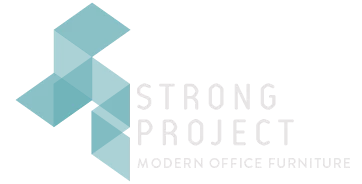Your talent is your greatest asset. The people who make up your workforce, your subject matter experts, are the life-blood of your business. Without them, you wouldn’t have products to take to market, service people to see to your customer base, or technologically savvy team members to keep your equipment up and running. There’d be no new innovation, forward thinking, or ingenious marketing strategies to reach your customers. Without talented people performing their daily tasks and initiating future projects, business would come screeching to a halt.
So what’s a hiring manager to do to stay competitive? The answer: hire a diverse workforce. In a Harvard Business Review study of 1800 professionals, numerous surveys and interviews, and 40 case studies, they learned that companies with a diverse workforce—different ethnicities, genders, religious affiliations, orientations, and locations—are more likely to have captured a new market demographic for their products or services. The reason? Diverse employees are more likely to have unique experiences on which to rely for creativity, problem solving, implementing new solutions, and brainstorming innovation. A wider variety of backgrounds are more experienced with serving a diverse customer base. As a result, companies with a less homogenous workforce consistently outperform competitors, and that directly impacts the bottom line.
In fact, when people of different backgrounds, races, religions, and life experiences come together, it’s pretty likely awkwardness can and will ensue. The beauty is, according to a cognitive intelligence study performed by MIT engineers, these same people will seek ways to limit and even eliminate that awkwardness, expanding their cultural understanding and broadening their horizons. They do this by:
- Listening to the person different from them to enhance their understanding of that person’s perspective
- Voicing their opinion in an effort to convey an idea that might be different from the rest of the group’s, thereby contributing their expertise and experience more fully.
- Giving each other equal time to talk
- Being sensitive to experiences outside their own
- And being more inclusive in terms of gender diversity
Even the presence of a single group member with an important variation from the rest of the group can actually cause people to consider their worldview differently, making those who are similar think more creatively, and with more deliberate intention, than if they were working together without the diverse individual.
Just two years ago, there were more CEOs named John than there were female CEOs running big companies. This is a clear detriment to business, because statistically speaking, corporate performance is enhanced with the greater presence of women, according to Catalyst. Fortune 500 companies with higher female representation on their board of directors saw 53% better return on equity, 42% higher return on sales, and 66% more success turning invested capital into profit than their male-dominated counterparts.
Racial diversity in particular has room to directly and immediately impact the bottom line if you hire bilingual talent. For customers interested in your products who speak another language, they won’t struggle to understand if what your business can do for them is what they need when they connect with an employee who speaks their native tongue. The less that customer struggles to complete the transaction, the happier they’ll be, and they’ll note that for future business.
But if you’re not surrounded by a diverse group of recruiters with an eye for acquiring diverse talent, what’s the best way to implement diversity policies in your hiring process? One option is conducting blind auditioning by removing identifying factors from resumes that might contribute to cultural assumptions based on names and genders. Taking information in an entirely neutral format from a resume resulted in a 21% increase in hiring women compared to standard hiring practices, Harvard and Princeton Universities found.
Another practice would be to enlist input from other members of senior management. This spreads the responsibility to more people, thereby increasing perspectives as well as sharing the time spent on recruiting. Be honest, too. The point of diversity is to think outside typical experience, but how can you recognize where experience gaps exist without asking some tough questions? Enlisting others to help will start the conversation, and you might be surprised and empowered by the feedback. It wouldn’t hurt to take a look outside your business, too. If another company is getting it right, why are they succeeding, and can their practices be adapted to fit your hiring process as well?
Inspiration comes in all shapes, sizes, colors, genders, ethnicities, and backgrounds. The greater range of experiences you can bring to the table, the wider your reach in terms of problem solving, innovation, creativity, and employee engagement. Sure, there could be bumps in the road, but the company that learns together betters the world together. And that is the true bottom line.




